Towards the evening we came to the Coloured Lake (Laguna Colorada) where we were to spend the night. The lake is situated at 4278 m a.s.l. Not only is it coloured, it is coloured red! Completely and utterly. As if somebody had diluted red paint in the lake waters. This colour comes from algae that live there and serve as food for flamingos, as well as from different minerals and salts. The surroundings of the lake, where the water has receded during the period with no rain, are all covered by some unusual whitish-grey matter. This is neither soil, nor sand, nor stone, but rather something different. As I’ve said, a strange matter.
 Laguna Colorada
Laguna Colorada
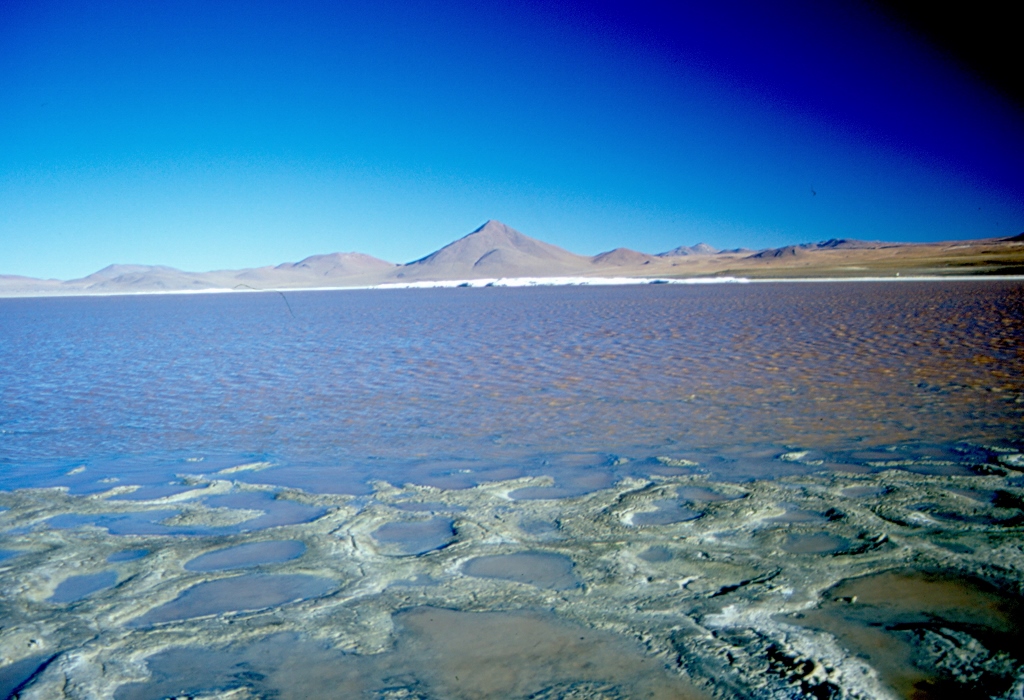 Laguna Colorada
Laguna Colorada
Having left my things in the room where we were to spend the night, I went for a walk by the lake with Angel. As it turned out, he was a great guy and the two of us chatter cheerfully and took photos as we approached the lake and walked along its shore. Going in this one direction, we were not aware of the fact that a rather strong wind was blowing into our backs. However, as we started to go back, it was horrible, since everything was happening at a very low temperature, exacerbated by the wind chill factor. On our part we did make a mistake by going too far, so we had to cover the same distance to get back to the “settlement” consisting of several single-floor buildings. Angel had already had problems with altitude all the time, because just a few days before he had been in the lowlands, so he felt bad on account of that sudden and big change in the quantity of available oxygen, while I started to feel terrible later on. I supposed that the severe cold (we were told that it was around -15°C), made worse by the strong wind, led to problems with circulation and consequently with symptoms of altitude sickness, such as headache and the feeling of nausea.
There was no luxury in this place. We were all placed in group rooms and the buildings consisted of walls made of some stone-like blocks, while the roof was made of corrugated PVC boards placed on top of these walls. And that was it. It was good, though, that there was no wind inside. In other words, it was terribly cold. Everywhere. There was also no running water, so the next morning I used bottled water to wash my face and instead of flushing we used a small plastic bucket to grab water from a large barrel. However, the bathroom elements were not an issue. By far the biggest issue was that it was cold.
When I went to bed, it looked like this. I slept on a bed with a mattress. Over the mattress I placed a sleeping bag each one of us had received from the organizers of the trip. I entered the sleeping bag fully clothed and that meant: cotton knee-socks, wool socks, thermal fleece pants, vest, T-shirt and sweater. On top of me, there was the upper part of the sleeping bag, then two blankets and my jacket. And, had I not had the hot-water bottle, I think I would have cried. This way, thanks to the advice of the girl I met in Sucre, I had the bottle which I had filled in the dining area (a separate small building and the only one that was heated) with really hot water, so I felt pleasant with my sleeping arrangement, even occasionally hot. With a lot of luck because of the hot-water bottle, I managed to sleep quite well and I woke up the next morning feeling rather fine and refreshed.
Although I was not the only one, I have to add that it was my fault in a way that I was not fully prepared and equipped for such cold. The three French (mom, dad and daughter), for instance, who were in the same group as I, did bring their own sleeping bags for low temperatures, so they slept in their regular pyjamas in them without any problems whatsoever. They also, very smartly, brought some special medicines against altitude sickness (the parents were some medical workers or something, so they knew about those things) and neither the parents nor the young daughter had any issues.
So, in the morning, after washing and brushing teeth using bottled water, we headed further south and the first break we made was at a geyser, situated at 4870 m, called Sol de Mañana. It is actually not a water geyser as such, but rather sulphuric or some other vapour gets released from the ground under high pressure. It was interesting, but I didn’t find it spectacular.
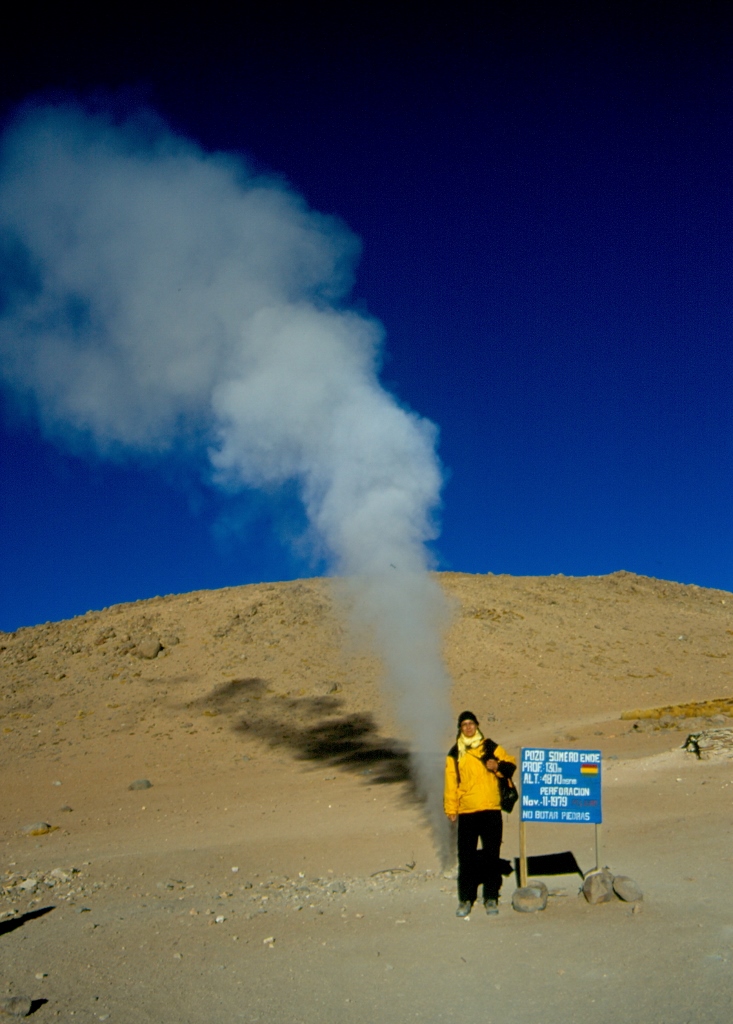 Sol de Mañana geyser at 4870 m a.s.l.
Sol de Mañana geyser at 4870 m a.s.l.
What I did find much more interesting was when we drove a few hundred meters further down. There were gases coming out of ground in a smaller section with unusual formations that were in different colours, but here there were also numerous pools with light-coloured mud that simmered in some places, but in others it boiled quite hard. This was not an isolated spot and the entire area was covered with such points where steam came out. Everything, of course, smelt of sulphur.
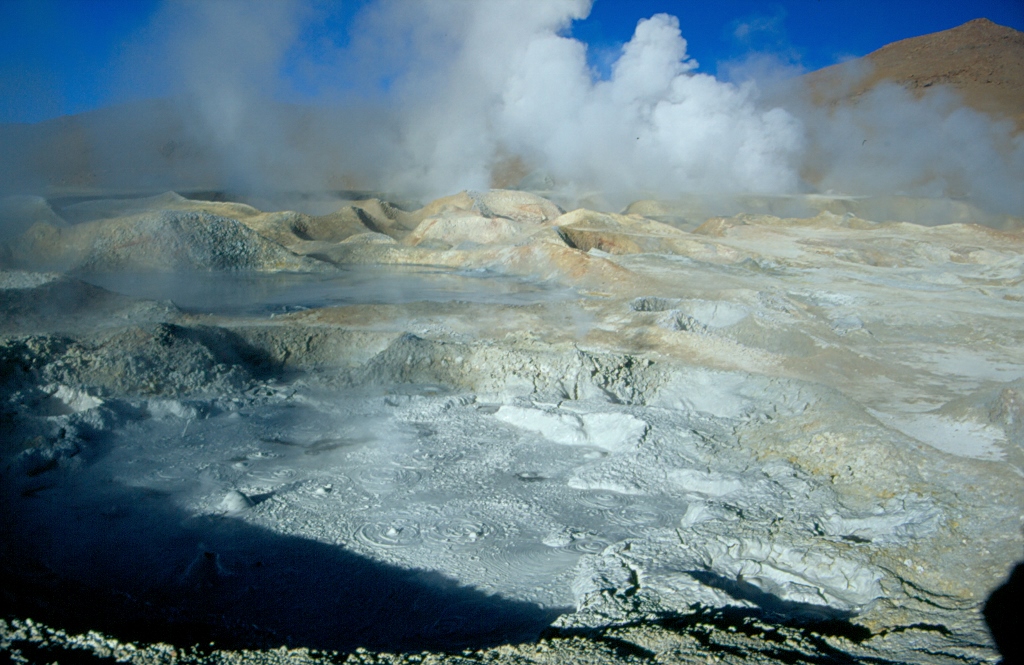 Boiling mud
Boiling mud
After a short break and taking photos near the “boiling mud” we continued to thermal springs. That was the next fascinating place we visited. There, water comes up to the surface, collects in a natural shallow pool before forming a stream that after a few dozen metres flows into the nearby lake Polques. The water is warm enough for a person to enter it and feel comfortable, which the guides suggested to tourists, but I was still cold enough outside that I didn’t feel any desire to part from my warm clothes even for a short while.
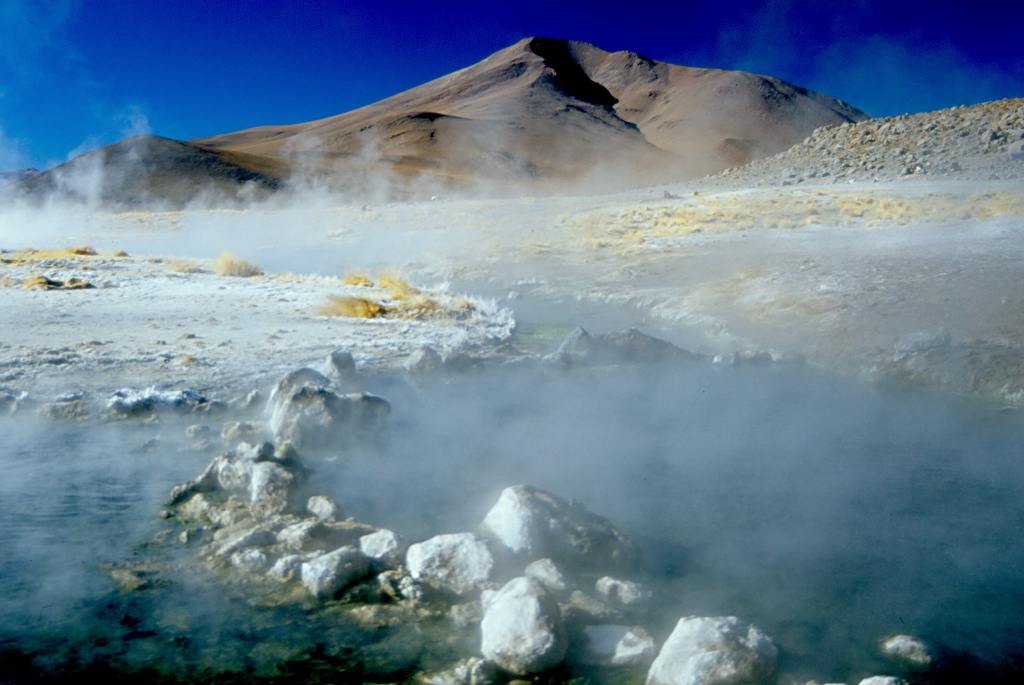 Thermal springs
Thermal springs
Then we went on through the magical landscapes towards the Green Lake (Laguna Verde). Along the way, as we passed a large slope of an elevation to our left (these are in fact all high mountain chains, but the impression is relative), we saw some big rocks scattered all over the volcanic surface and they are called Dali’s Rocks since the setting is truly evocative of a composition that could have been in some painting of Salvador Dali.
We stayed by Laguna Verde for a very short period of time, because we had to rush to the nearby border crossing in order for the two Canadians from our group to move on to Chile. The lake, as the name suggests, is green. In any other place this would have been completely unusual, but here I was already getting used to the idea of being somewhere out of this world where everything can happen. This does not mean that I was any less delighted or that I didn’t admire what I saw. That could not be possible before the image of still green water above which rose an impressive cone of the extinguished volcano Licancabur, 5868 m high. If it hadn’t still been so cold, it would have been nice for one to stay there for a few hours, just sitting and taking in the beauty that was so simple and yet so magnificent.
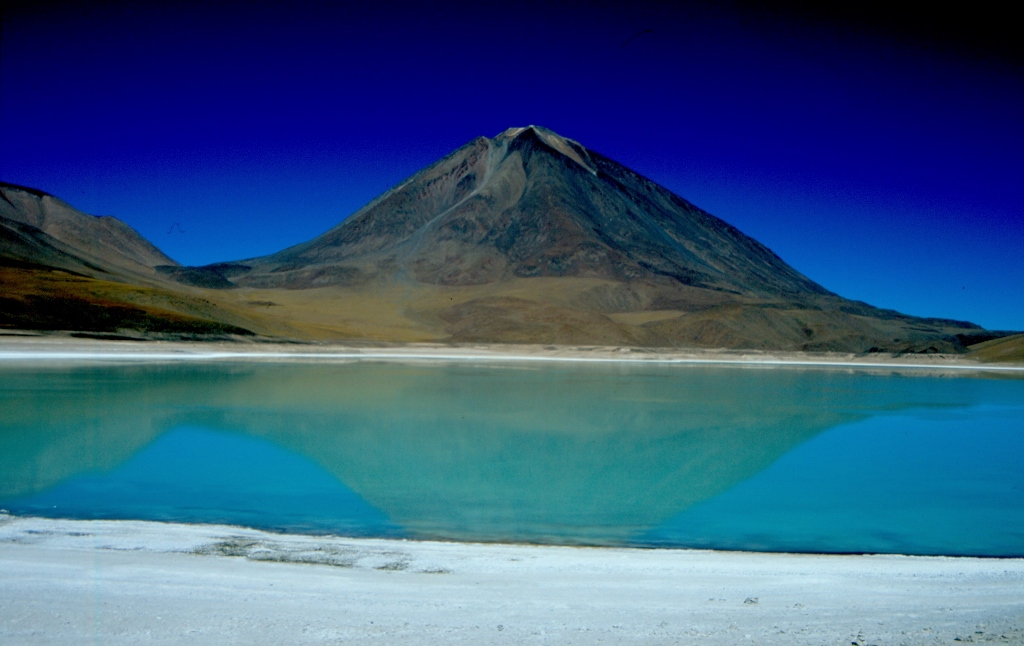 Laguna Verde and volcano Licancabur
Laguna Verde and volcano Licancabur
The arrival to the Chilean border and parting from the nice young couple also marked in a way the end of visiting new exciting places, so the tour turned and started to take us back to Uyuni. In the beginning we simply followed the same path, passing again by lake Polques, but from Laguna Colorada, we took another route. Not long after taking this turn, we made a break for lunch near a stream surrounded by peacefully grazing llamas and alpacas. Soon we left the mountainous area and drove over the plateau. The landscapes and colours again became different. After a couple of hours of driving we came to a place called Valley of Rocks (Valle de la Roca) with stone formations that had arches in them. Significantly less than in Utah (see the text on the National Parks in the south-west USA), but it seemed as if a branch of the same geological formation had extended all the way until here.
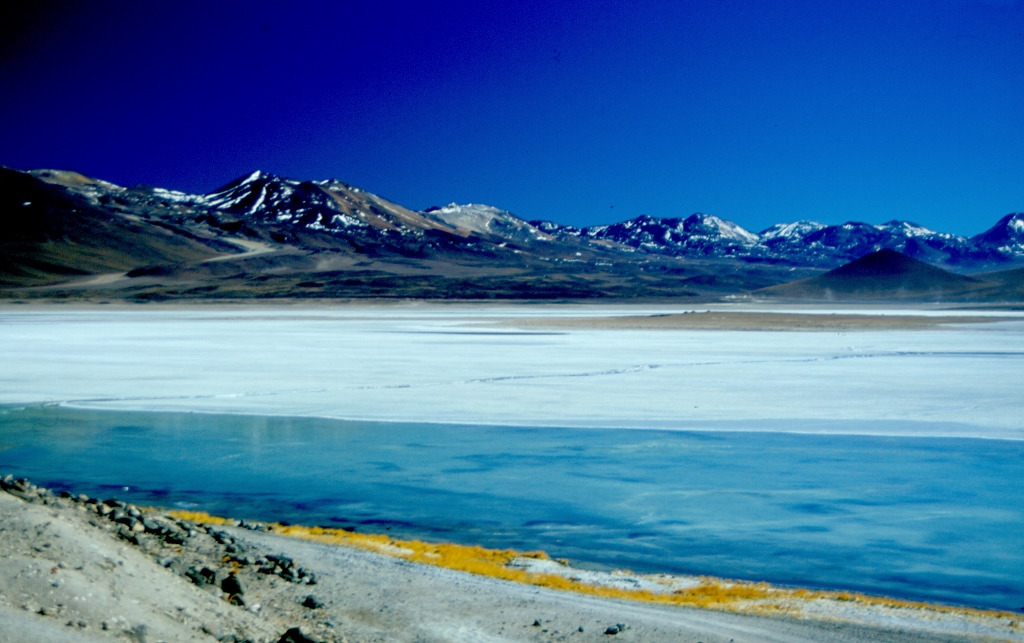 Lake Polques
Lake Polques
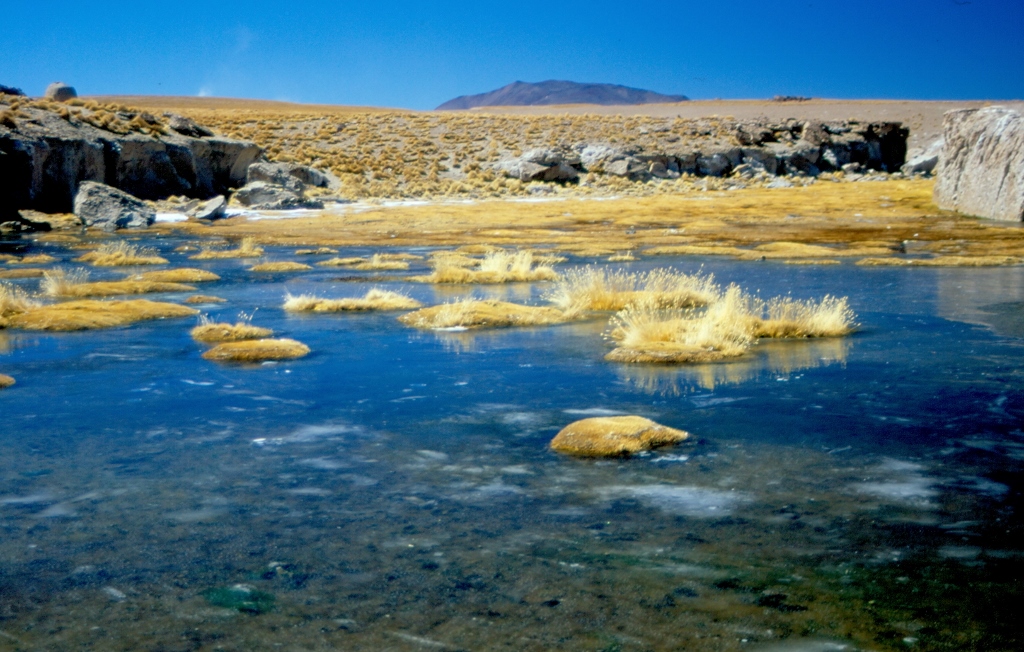 A pool made by a stream the surface of which is covered by a layer of ice
A pool made by a stream the surface of which is covered by a layer of ice
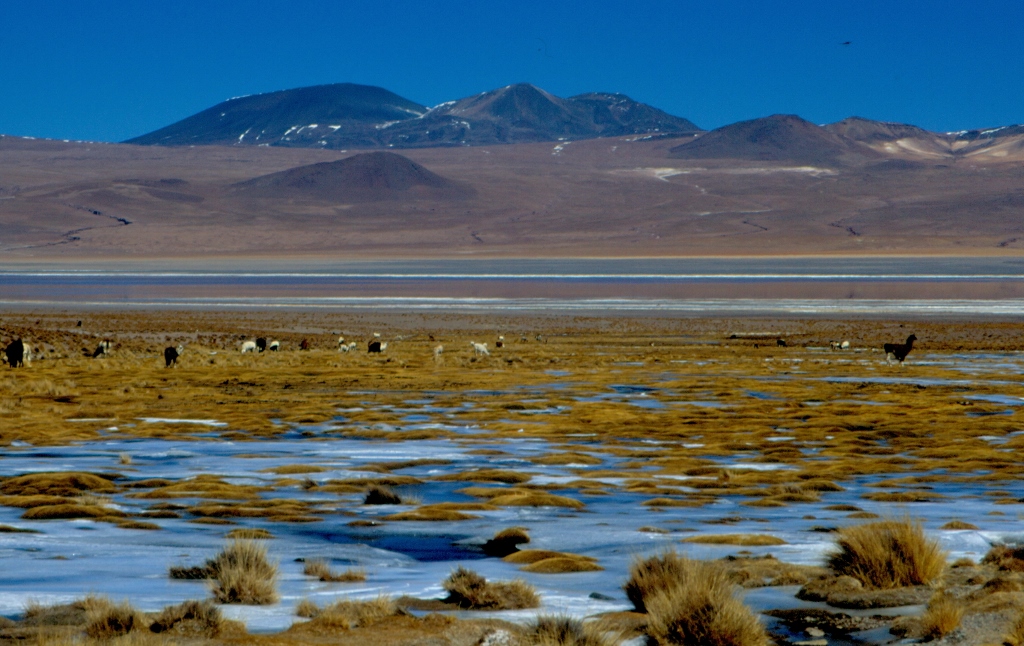 A stream spreading over the land surface under a thin layer of ice, alpacas, llamas and a thick red line in the middle which is a part of Laguna Colorada
A stream spreading over the land surface under a thin layer of ice, alpacas, llamas and a thick red line in the middle which is a part of Laguna Colorada
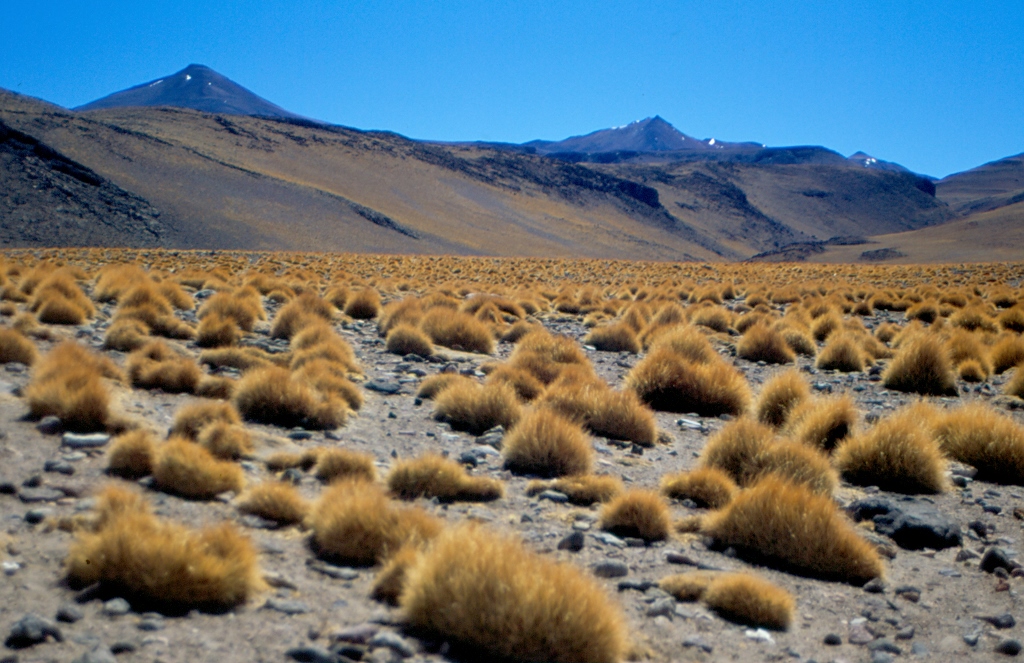 Vegetation at over 4000 m
Vegetation at over 4000 m
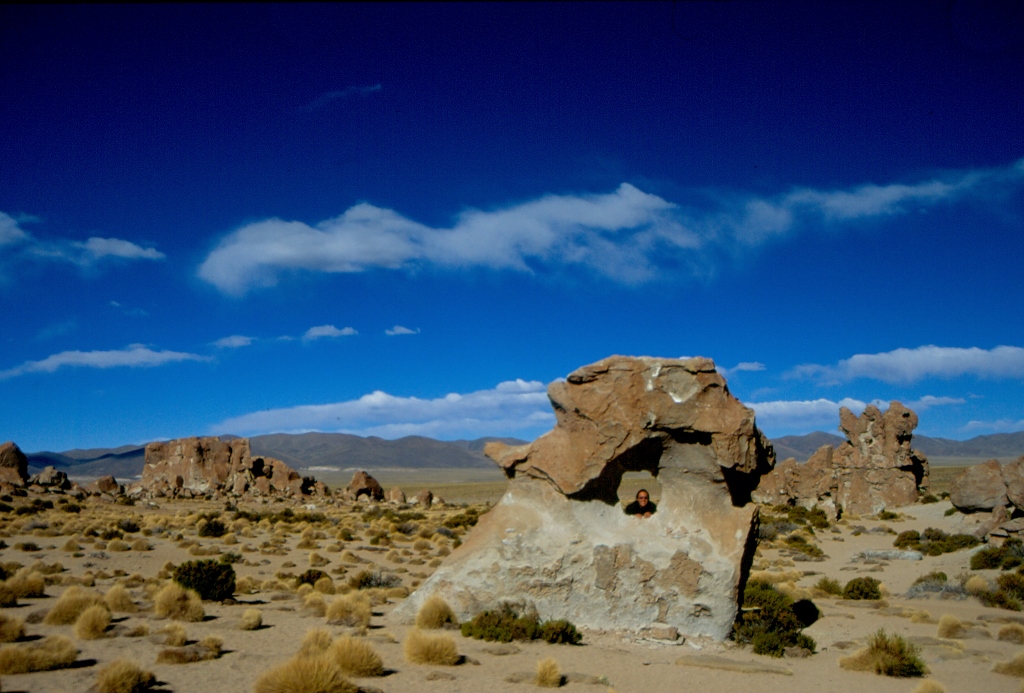 Valle de la Roca
Valle de la Roca
After that we went back to Uyuni more or less directly. There I first organized my further travel and then I went to meet up with Angel for a dinner. It was really very nice and enjoyable, and was a continuation of our hanging together during the tour. On the other hand, it felt almost like a first date where we additionally got to know each other. In the end he paid for the dinner and we joked that now I owed him one. In the meantime, we have lost touch, so I’m still in debt.
Eventually, I walked over to the terminal and settled in the coach. As the coach was very comfortable, with broad and soft seats, even with the driving on a dirt road, I managed to sleep to Oruro, as well as later from Oruro to La Paz, so I reached my final destination of the day in a very good state. By the way, Oruro is famous for its carnival, but this was not the time for the festivity, so I had no plans to stay in the city.
As soon as I arrived in La Paz, I went straight to the Durans’. They greeted me with joy and I was happy as if I had returned home. I first washed my clothes and then I went up to the central terminal to buy a ticket back to Peru. While downtown I also bought a bracelet made of red-orange seeds, as I was told they were a good protection against “an evil eye.” Just in case. When I went back home, it was time that I showed Señora Maria a recipe, so I made a simple version of Turkish tulumba in order for her to see the “recipe procedure.” Still, even in the case of this recipe I got a trick of trade from my dearest Señora Maria – in addition to lemon juice, it is also possible to add aniseeds to the syrup in order for it to get a distinct ouzo flavour. If you are a fan, give it a try!
In the evening, Ximenita, Señora Maria and I dressed up and went to a nearby karaoke club. At first, there were only three of us there, but later on more people came so that there were more than two singers. It was nice and lots of fun and we stayed there until well after midnight!
In the morning I first washed my hair and started to pack, but I soon interrupted that in order for Ximenita and I to go to the Valley of the Moon (Valle de la Luna). I was a bit worried not to start panicking because of the approaching departure, but the brief visit turned out to be quite nice. Valle de la Luna is a very interesting place. It is located in the far south of La Paz and it consists of very strange-looking rock formations shaped up by erosion. In a way similar to Djavolja varos in Serbia. Very nicely arranged paths lead visitors around the site and it was a fine surprise when I also spotted a few viscachas here. In addition to enjoying the visit itself, I was particularly glad that I shared some more time with my dear friend Ximena.
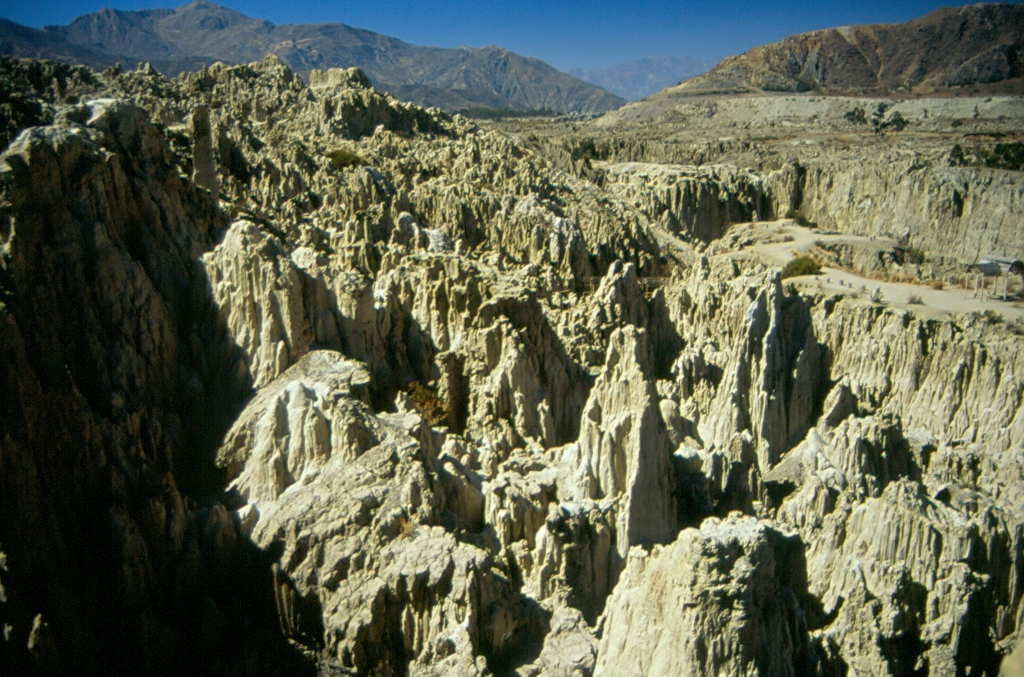 Valle de la Luna
Valle de la Luna
The time was running like crazy and we soon had to go back home in order for me to finish with my packing. The lunch that day was made especially for me: it was light in order for me not to feel too heavy during the ride. In her prayer before the lunch, Señora Maria prayed for me as well and for my safe return home. I was deeply touched.
And then the moment came for me to bid farewell to Bolivia and the family Duran. I parted from Gustavo and Ximenita at home, while Señora Maria and Jose saw me off at the central terminal. It was yet another touching gesture on their part. They knew well I could take a taxi and manage on my own, but without any grand words they went with me as a sign of their good will and kindness which they had in abundance and which they incessantly bestowed upon me.
It was through a very lucky set of circumstances that I did return to La Paz the following year, albeit only for a couple days, but I did this in order to reunite again with this wonderful family that I came to love so much.